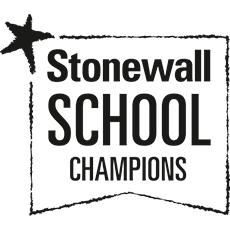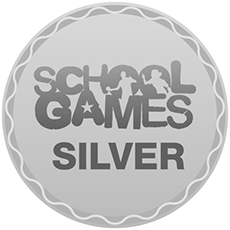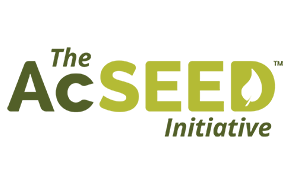Year End Targets
Year 2 Reading
I can use the sounds I know to decode words automatically and my reading is fluent. (Word Reading)
I can read and blend all sounds I have been taught. (Word Reading)
I can recognise alternative sounds for letters or groups of letters. (Word Reading)
I can read words of two or more syllables that contain sounds I have been taught. (Word Reading)
I can read words containing common suffixes. (Word Reading) 2
I can read further common exception words and see where the sounds do not match. (Word Reading)
I can read most words quickly and accurately without needing to sound and blend words I have seen before. (Word Reading)
I can read aloud books within my reading level, without making many errors and sounding out new words without long pauses. (Word Reading)
I can re-read books sounding out new words correctly to improve my speed and confidence. (Word Reading)
I can enjoy and understand books by listening and talking about and expressing my views on poems, stories and non-fiction texts that I can’t read myself. (Comprehension)
I can enjoy reading and discussing the order of events in books and how items of information are related. (Comprehension)
I can enjoy reading by knowing a wider range of stories, fairy stories and traditional tales and I can retell them to others. (Comprehension)
I can enjoy reading by recognising repeated themes and ideas in stories and poems. (Comprehension)
I can explain the meaning of words that I know and I can ask about the meaning of new words. I can link the meaning of new words to those I already know. (Comprehension)
I can talk about my favourite words and phrases. (Comprehension)
I can enjoy reading poems and know some off by heart. I can say what I like and don’t like about a poem. I can change my voice when reading a poem to make it clearer. (Comprehension)
I can use what I have already read or heard, or from the information a teacher has given me, to help me understand what I am reading. (Comprehension)
I can spot if a word has been read wrongly by following the sense of the text. (Comprehension)
I can say how the characters might feel in a story I have read or heard on the basis of what is said and done and answer questions. (Comprehension)
I can say how the characters might feel in a story I am reading on my own on the basis of what is said and done. (Comprehension)
I can ask and answer questions about the books or stories I am reading and make links. (Comprehension)
I can say what might happen next in a story based on what has happened so far. (Comprehension)
I can take part in a group talk about what we have listened to. I take turns and listen to what others have to say. (Comprehension)
I can explain what I think about books, poems and other material that I have read or heard. (Comprehension)
Year 2 Writing
I can break down spoken words into their sounds and write them mostly correctly, and make good attempts at spelling words I do not know. (Spelling)
I can learn new spellings by using words I already know how to spell. (Spelling)
I can spell many common exception words. (Spelling)
I can spell most common exception words. (Spelling)
I can spell some words which have been shortened. (Spelling)
I can spell most words which have been shortened. (Spelling)
I can spell words which use an apostrophe to show possession e.g. the girl’s book. (Spelling)
I can spell words that sound the same but are spelt differently e.g. buy bye by. (Spelling)
I can add the endings -ment, -ness, -ful, -less, -ly to spell some longer words. (Spelling)
I can add endings such as -ment, -ness, -ful, -less, -ly to spell most longer words. (Spelling)
I can use simple spelling rules. (Spelling)
I can write the correct spellings and punctuation in simple sentences I hear my teacher say. (Spelling)
I can write lower-case letters that are all the same size in some of my writing. (Handwriting)
I can write lower-case letters that are all the same size in most of my writing. (Handwriting)
I can use the diagonal and horizontal strokes I need to join letters in some of my writing. (Handwriting)
I can use the diagonal and horizontal strokes I need to join letters. (Handwriting)
I know which letters, when they are next to one another, are best left unjoined. (Handwriting)
I can write capital letters and numbers the right way up, the correct size relative to each other and lower case letters. (Handwriting)
I can use spacing between words that fits with the size of the letters. (Handwriting)
I can write sentences about things I have done and things that others have done. (Composition)
I can write a long piece of text about a real event in one go. (Composition)
I can write poetry. (Composition)
I can write for different purposes, writing long and short pieces of work. (Composition)
I can write for different purposes, using ideas and language from things I have read. (Composition)
I can plan my writing by writing down my ideas or talking about them. (Composition)
I can plan my writing by writing down ideas and/or key words and new vocabulary. (Composition)
I can plan my writing by writing down my ideas or talking about them for each sentence. (Composition)
I can change my writing and make corrections after I have spoken to a teacher or another child about it. (Composition)
I can check my work by reading it through to make sure it makes sense and that I have used the right verbs to indicate time. (Composition)
I can proof read my work, checking for spelling, punctuation and grammar errors, and sometimes choosing better words. (Composition)
I can read my work aloud with confidence using the tone of my voice to make the meaning clear. (Composition)
I can make new words by adding -ness and -er at the end of a word. I can make new words by putting two words together e.g. whiteboard, superman. (Vocabulary, Grammar and Punctuation)
I can make new words by adding -ful, -less to the end of a word e.g. helpful, helpless. (Vocabulary, Grammar and Punctuation)
I can add these letter groups to the end of words: -er, -est, -ly e.g. smoother, smoothest, smoothly. (Vocabulary, Grammar and Punctuation)
I can use these words in my writing: when, if, that, because, or, but. (Vocabulary, Grammar and Punctuation)
I can use description in my writing e.g. the blue butterfly, plain flour, the man in the moon. (Vocabulary, Grammar and Punctuation)
I can tell if a sentence is a question, command, exclamation or a statement. (Vocabulary, Grammar and Punctuation)
I can use the correct tense in my writing. (Vocabulary, Grammar and Punctuation)
I can use the correct verb form to indicate actions in progress in the present time or in the in past e.g. she is drumming, he was shouting. (Vocabulary, Grammar and Punctuation)
I can use capital letters and full stops to show where sentences start and end and sometimes use question marks. (Vocabulary, Grammar and Punctuation)
I can use question marks and exclamation marks appropriately. (Vocabulary, Grammar and Punctuation)
I can use commas when I am writing a list. (Vocabulary, Grammar and Punctuation)
I can use apostrophes. I can use them to show where letters are missing and to show possession e.g. the girl’s hat. (Vocabulary, Grammar and Punctuation)
I can explain what these words mean: noun, noun phrase, statement, question, exclamation, command, compound, suffix, adjective, adverb, tense (past, present), apostrophe and comma. (Vocabulary, Grammar and Punctuation)
Year 2 Maths
I can say how much numbers are worth in a bigger number with support. (Number and Place Value)
I can count forward and backwards in jumps of 2, 3 and 5 from 0 and in 10s from any number. (Number and Place Value)
I can find the place value of each digit of a number with tens and units. (Number and Place Value)
I can find and show numbers using different equipment such as number lines and number squares. (Number and Place Value)
I can compare and order numbers from 0 to 100 using < > and =. (Number and Place Value)
I can read and write numbers to 100 in numerals. (Number and Place Value)
I can read and write numbers to 100 in words. (Number and Place Value)
I can use place value and number facts to answer questions. (Number and Place Value)
I can partition two-digit numbers into different combinations of tens and ones using apparatus. (Number and Place Value)
I can use reasoning within addition. (Number and Place Value)
I can recall the multiples of 10 below and above any 2 digit number. (Number and Place Value)
I can solve problems with addition and subtraction including those involving numbers, quantities and measures by using objects or pictures. (Addition and Subtraction)
I can answer simple addition and subtraction questions in my head as well as by writing them down. (Addition and Subtraction)
I can use addition and subtraction facts to 20 quickly and workout similar facts to 100. (Addition and Subtraction)
I can add and subtract a two digit number and a one digit number mentally and when using objects, number lines and pictures. (Addition and Subtraction)
I can add and subtract a two digit number and tens mentally and when using objects, number lines and pictures. (Addition and Subtraction)
I can add and subtract 2 two digit numbers mentally and when using objects, number lines and pictures. (Addition and Subtraction)
I can add and subtract 3 one digit numbers mentally and when using objects, number lines and pictures. (Addition and Subtraction)
I can show that adding 2 numbers can be done in any order but subtraction cannot. (Addition and Subtraction)
I can show that subtraction is the opposite of addition and use this to check my work. (Addition and Subtraction)
I can remember doubles and halves up to 20. (Addition and Subtraction)
I can use estimation to check that my answers to a calculation make sense. (Addition and Subtraction)
I can solve missing number problems using addition and subtraction. (Addition and Subtraction)
I can remember and use multiplication and division facts for the 2, 5 and 10 times tables and recognise odd and even numbers. (Multiplication and Division)
I can answer multiplication and division problems within the tables using x, ÷ and =. (Multiplication and Division)
I can show that multiplying 2 numbers can be done in any order but division cannot. (Multiplication and Division)
I can answer questions involving multiplication and division mentally and with objects. (Multiplication and Division)
I can answer questions involving multiplication and division using arrays and repeated addition. (Multiplication and Division)
I can use multiplication facts to make deductions outside known multiplication facts. (Multiplication and Division)
I can solve multiplication and division word problems with more than one step. (Multiplication and Division)
I can rewrite addition statements as simplified multiplication statements. (Multiplication and Division)
I can find, name and write fractions of a length, shape, set of objects or amount, including 1/3, 1/4, 2/4, and 3/4. (Fractions)
I can write simple fractions facts such as 1/2 of 6 = 3 and 2/4 = 1/2. (Fractions)
I can choose the right units to measure length, height, mass, temperature or capacity. I can read to the nearest unit and do this on rulers or scales. (Measurement)
I can compare amounts using these signs: >, < or =. (Measurement)
I can use the £ sign and p sign. I can use notes and coins to make a particular amount. (Measurement)
I can find different ways for coins to add up to an amount. (Measurement)
I can add and subtract money and give change. (Measurement)
I can put different events in order and compare them. (Measurement)
I can tell the time to 5 minutes. I can tell when it is quarter past or quarter to an hour. I can draw these on a clock. (Measurement)
I can tell you how many minutes are in an hour and how many hours are in a day. (Measurement)
I can read scales in divisions of ones, twos, fives and tens. (Measurement)
I can read scales in divisions of ones, twos, fives and tens when some numbers are missing. (Measurement)
I can read the time on a clock to the nearest quarter of an hour. (Measurement)
I can notice and explain the properties of 2-D shapes e.g. the number of sides and line symmetry. (Properties of Shape)
I can notice and explain the properties of 3-D shapes e.g. the number of edges, vertices and faces. (Properties of Shape)
I can spot 2-D shapes on the surface of 3-D shapes such as a circle on a cylinder and a triangle on a pyramid. (Properties of Shape)
I can compare and sort common 2-D and 3-D shapes and everyday objects. (Properties of Shape)
I can order mathematical objects in patterns and sequences. (Position and Direction)
I can use mathematical vocabulary to describe position, direction and movement. This could include movement in a straight line. (Position and Direction)
I can read and draw simple pictograms, tally charts, block diagrams and simple tables. (Statistics)
I can ask and answer simple questions by counting the number of objects in each category and sorting the categories by quantity. (Statistics)
I can ask and answer questions about totalling and comparing grouped data. (Statistics)






